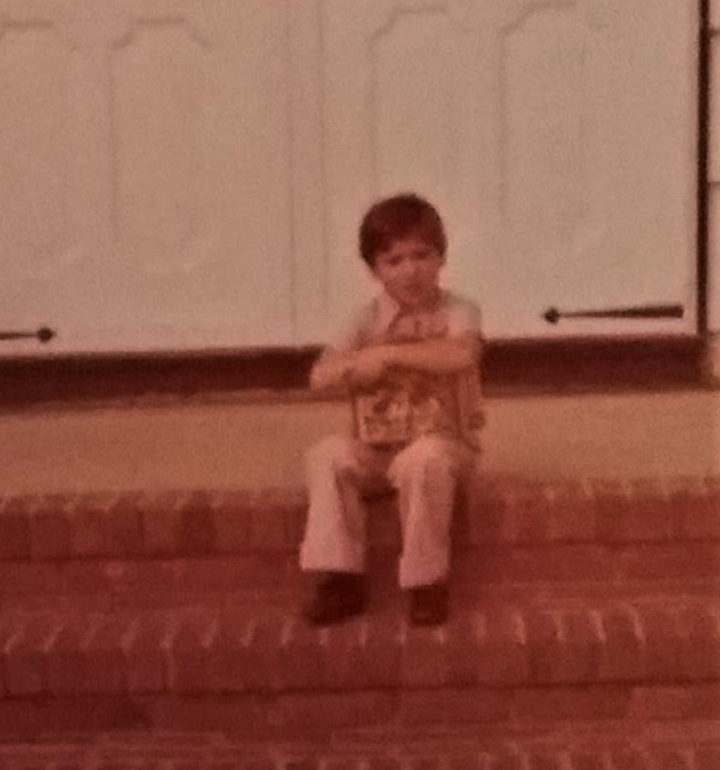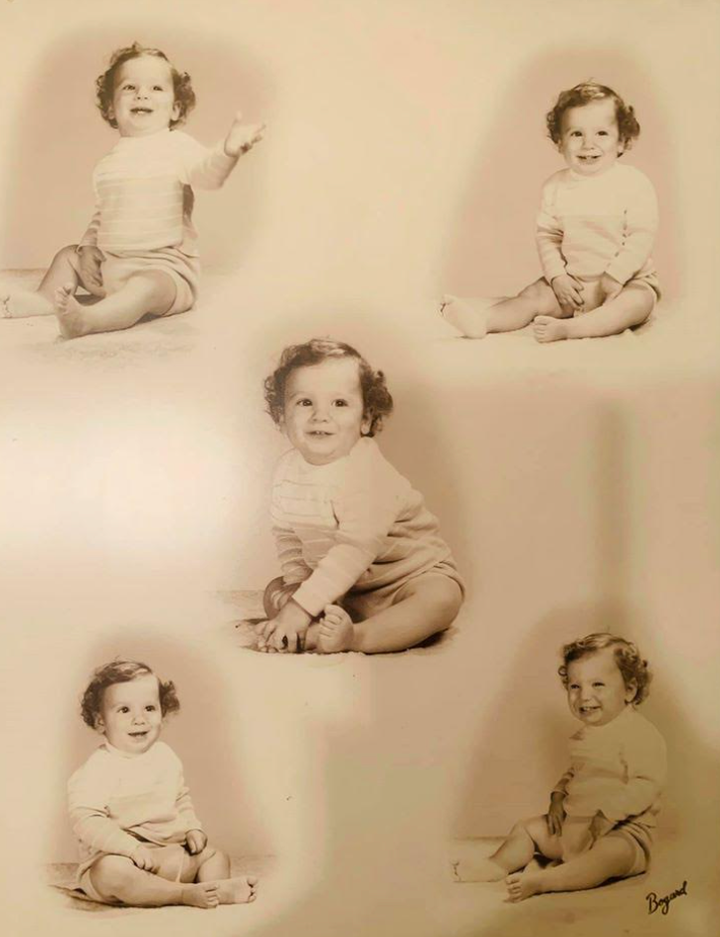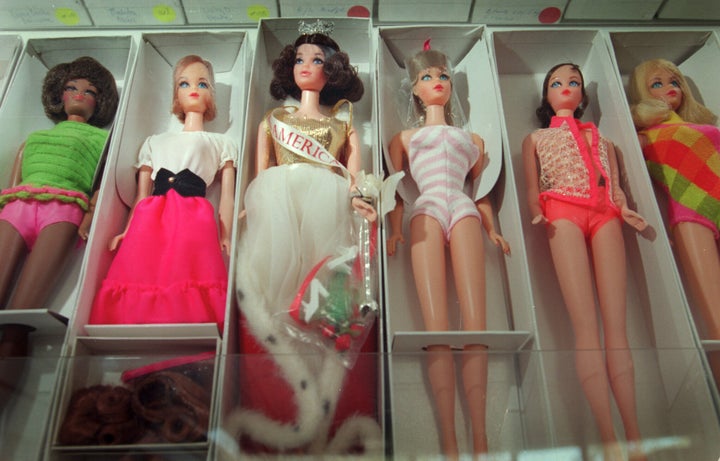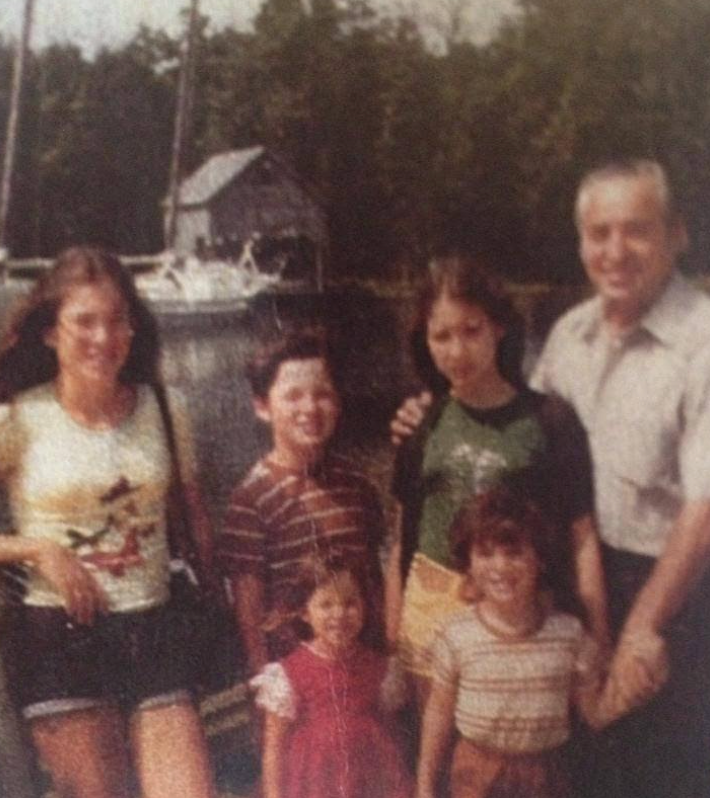
A doll! A doll! William wants a doll! Don’t be a sissy said his best friend Ed.
Those lines are from the song “William’s Doll,” based on the Charlotte Zolotow and William Pène du Bois book and sung by Alan Alda and Marlo Thomas on the 1972 “Free To Be You and Me” album.
Of all the songs from this groundbreaking record helping children better understand gender, race and other issues from what we today call a “woke perspective,” it is the only one whose lyrics I recall by heart.
There’s a reason: Like William, I was a boy who played with dolls.
“Barbie,” the new movie on the ― at times ― controversial doll has reminded me that I was a gay Barbie Boy in a heteronormative world, something I did not yet know, even if through my fascination with dolls, others did. Cue outdated psychological nonsense if you want, but at home, I lived in a largely female environment, with three sisters and an older brother with autism spectrum disorder. My father was distant, and like many fathers at the time, not often home. Together with my mother and aunt, my close role models were female, the young ones playing with Barbies.
Barbie was an early agent of progress for my siblings and me. My parents were hardly role models promoting racial harmony, but after moving our family to a primarily Italian, Irish and Jewish neighborhood in suburban Freehold, New Jersey, from inner city environments in the aftermath of Newark’s riots, they believed even if there were few Black children to play with in our new neighborhood, we could still have Black dolls. Barbie and Ken had the Black neighbors we didn’t: Christie and her boyfriend Brad. This blonde plastic figurine reigned over a fantasy world where Blacks and whites played tennis together, conversing through pull strings in the back of their necks. It was also an imaginary world where a boy could, sometimes, play with a doll meant for a girl, pushing against the period’s gender boundaries.
You can be in second grade and not realize why you’re different from other children as you don an apron to play house with girls and seek attention from other boys. I developed crushes on others of my gender without understanding what these feelings were. Sometimes, I communicated through the Barbie World, not fully grasping why this was bad for boys to do. I remember trying to impress a boy whose name was Brad ― and who sat on the cool side of the lunch room ― by telling him I had a doll with his name. However, rather than being rewarded with a seat next to him, I was ridiculed. The scene still plays in my head whenever I meet someone named Brad.

At home, the Barbie World was where a boy could play with dolls ― until he no longer could. One day my sisters fiercely objected to me playing with Barbie and Christie. As children, we don’t always understand why a circumstance changes, but suddenly that day things were now different. It might have been a comment from a visiting friend who wasn’t used to boys playing with dolls or an ultimatum issued by my intolerant and homophobic father (though we didn’t use the latter adjective back then), who may have told my sisters I was not permitted to play with the dolls anymore.
Whatever or whoever it was, my sisters had just gotten beautiful new gowns for the dolls ― white satin with pink and red tulle for Barbie and green satin with blue tulle for Christie ― and I reacted violently to them rejecting me by grabbing the dolls and tearing up the clothes. If I wasn’t allowed to play with Barbie anymore, I was going to ensure that it was no longer fun for them. For years, the ripped gowns sat in a drawer ― a reminder of both my tantrum and my transgression into a shameful desire deemed inappropriate for my gender. Everyone knows boys aren’t supposed to play with dolls ― especially Barbie. What’s wrong with you?
This wasn’t the only time there was a strong reaction to my playing with dolls. Somehow (likely from an aunt who offered me unconditional love), I received the Joey Doll, the infamously anatomically correct male baby doll representing Joey Stivic from the TV show “All in the Family.” I remember bringing him swaddled in my arms to show him off to our back door neighbors. In my head, I thought, “It’s OK for a boy to play with a doll if it’s a boy too.” The neighbors were a sports-loving family full of boys who acted the way boys should act. They did not come out to look at my new doll and, instead, went so far as to lock their patio door so I could not enter.
A few days after that experience ― which I still view as a traumatic incident ― I received a dump truck as a gift. Even as a child I knew it was meant to steer me towards masculine, socially acceptable playtime activities for boys. In our backyard sandbox, neighborhood parents looked on with satisfied approval.

My father also cooked up a semantic fix for my misguided attraction. “We don’t call them dolls when boys play with them ― they’re action figures,” he would offer with a nervous laugh, wondering ― if not frightened ― what a doll fascination meant for his son’s development. So I received the Steve Austin “Six Million Dollar Man” doll ― I mean action figure ― whose bionic eye you could look through, as well as his boss Oscar Goldman who came with an exploding briefcase.
Then there were the G.I. Joe dolls I was showered with by relatives who frowned on my Barbie obsession. I also found that action figures provided a sanctioned way for me to spend time with Barbie again, since these plastic men obviously needed female companions for adventures. Macho as he was, in my fantasy world, Barbie preferred G.I. Joe to bland Ken, and secretly saw him.
Barbie might be criticized for promoting body dysmorphia, but G.I. Joe’s toxic masculinity caused its own problems. Wanting to resemble the soldier, I slashed my cheek with a tennis ball can lid so I could have a matching scar. Fortunately, it eventually healed without leaving a mark.
The barely-hidden fear my dad and other adults had about me playing with dolls was that it might make me gay. The connection between such play and gay identity has been examined by academics, who often analyze the experiences of men like me. Some of this research might now be considered outdated if not homophobic, even if it was advanced for its time, like Richard Green’s 1987 book examining “The Sissy Boy Phenomenon” based on 15 years of research. Others, like Peter Hegarty, refer to such research’s shortcomings and how using childhood play, which breaks gender norms as a homosexual adulthood predictor, overlooks stigma, a process he called the “gender identity disorder in childhood (GIDC) paradigm” in a 2008 Developmental Psychology article. Intriguingly, Barbie herself ― and what she potentially meant to the boys who played with her ― doesn’t seem to be mentioned when I looked through these articles.
My relationship with Barbie changed when I was a young adult and I came out of the closet. She could finally ― and openly ― be a part of my life. In the 1990s, when I lived in New Brunswick, New Jersey, while getting a master’s at Rutgers, I literally cooked in my own kitschy Barbie Dream Kitchen, a dreamy 1950s-themed room complete with pink vintage appliances, a pink dinette set and pink Fiesta Ware. To keep visitors entertained at parties I would often throw, I covered the pink walls with Barbie dioramas that presented gay story lines, like Barbie dumping Ken for a woman and moving to Hawaii when that state pioneered domestic partnership laws, long before same-sex marriage.

The more I looked during the early coming out period of my life, the more I saw how intertwined Barbie is with gay culture. Bathrooms in gay bars were often adorned with Barbies and Kens dressed in everything from Bob Mackie ensembles to custom leather fetish wear to absolutely nothing at all. Fire Island and Provincetown gardens didn’t have gnomes, instead they were decorated with Barbies in their bushes. Of course, promoters capitalize on this gay Barbie Boy connection now. In fact, the largest billboard for the movie I saw on a recent trip to Sydney was in the gay neighborhood Darlinghurst, with native Australian Margot Robbie decked out in Barbie’s classic 1959 black and white swimsuit, rising over the area’s rainbow flags.
When I became a gay uncle ― or “guncle” ― to my niece Evangelia, I got the chance to indulge in my Barbie obsession (one that my sisters still share) all over again. In fact, we frequently told my niece ― who is now a performer who plays real dress-up on stage ― “you have to keep playing with Barbie, because we need an excuse,” even after she had outgrown the doll. Fate is sometimes good to guncles and now I buy Barbies for my great niece Zoe.
Now I’m thrilled to welcome the new Barbie film, which appears to champion all kinds of diverse Barbies and Kens and offers us a new way to think about and appreciate this iconic doll.
We’ve come a long way from where we were when Barbie debuted in 1959, and I owe her a lot. I’m not sure who I’d be without my adventures with her, even if we got into trouble or made people anxious.
Because Barbie obviously isn’t real (no matter what the new movie tells us), I can’t thank her for everything I’ve gained from my relationship with her, but, luckily I did get to thank another huge influence in my young gay doll-loving life.
In 2012, I met Marlo Thomas at the premiere of Evita on Broadway. “Who was she?” asked my gay Argentine friend who was only interested in meeting stars who were recognizable back home. “She’s someone who changed my life,” I said, trying to explain the album that helped me survive my childhood. I’m not sure he got it, but it doesn’t matter. It’s part of what got me where I am now, and, like my decadeslong love for Barbie, I no longer need anyone to understand it or approve of it. It’s mine, it made me who I am, and I’ll never be ashamed of it again.
A New Jersey native, Michael Luongo is a journalist, photographer and educator who lives in New York City and Indiana. He is the author of several travel books, and a novel, “The Voyeur.” His work has appeared in The New York Times, Bloomberg News, Gay City News, and many other publications. He teaches Personal Essay for UCLA Extension’s online writing program and is a PhD student at Purdue University where he researches tourism in the context of conflict.
Do you have a compelling personal story you’d like to see published on HuffPost? Find out what we’re looking for here and send us a pitch.
